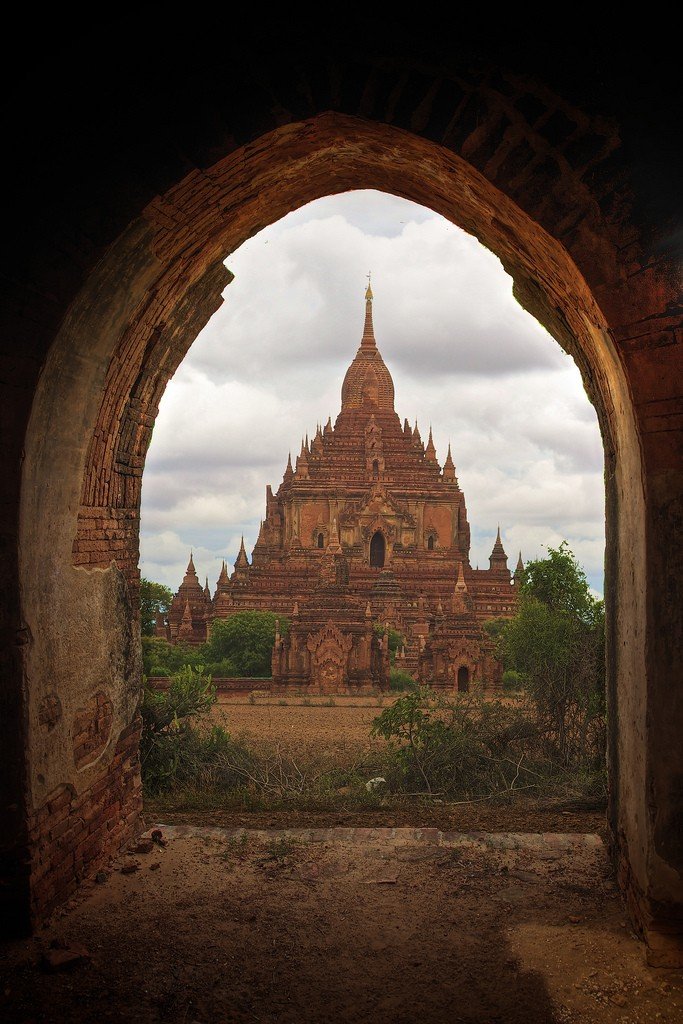Pagan (Bagan)
Pagan is the ancient capital of the kingdom of the same name in present-day Myanmar, the place where the kings of the Bagan dynasty built thousands of pagodas and temples in the 11th and 13th centuries. It is located 145 kilometers southwest of Mandalay. Archaeological excavations are being conducted here.










General Information
The large temples are located in the old walled city as well as outside the city. The construction of the Ananda temple was started in 1091 on the orders of King Anavrahta. Ananda became a model for the construction of many temples. The sides of the central square are 53 m long and 10.7 m high, in the center of each side is a huge portico with a peaked roof. Six gradually decreasing terraces are crowned with sikharas in the form of pine cones, in the center of the structure stands a stupa – its shape is repeated by four smaller stupas at the corners of the building. On foggy mornings it seems as if the gold-clad stupa is floating in the air.
.
Among the typical bell-shaped Buddhist temples is the Maha Bodhi Temple, a replica of the temple located at Bodhgaya in Bihar in India. Here it is the only Indian-type temple built during the reign of King Htilominlo (1211-1234).
.Among the major treasures of the Archaeological Museum in Pagan is the Mayadesi Column, it is considered the Burmese version of the Rosetta Stone as it contains inscriptions in the Pyu, Mon, Pali and Burmese languages. The discovery of the column in 1917 helped decipher the Pyu script. The column was found near a pagoda of the same name. The museum houses thousands of records and artifacts from the excavation, including a bronze sculpture of a lotus bud that opens to reveal a tiny stupa with delicate images of Buddha at the base.
Distinguished by their purpose are temples – usually symmetrical in shape with four altars and Buddha statues in each direction of the horizon, stupas with holy relics, and caves (gubyauji) – temples with a labyrinth of corridors painted with murals. Older frescoes are two-colored, later frescoes are multi-colored, the images often completely fantastic and surreal. One can spend weeks going from temple to temple, meditating in front of altars, climbing to the upper tiers on steep steps and through inner dark staircases, admiring the sunset from special observation platforms on the tops of temples. A huge abandoned city, haunted for centuries, whose inhabitants spent all their energies on building temples and did not think about their own homes.
.